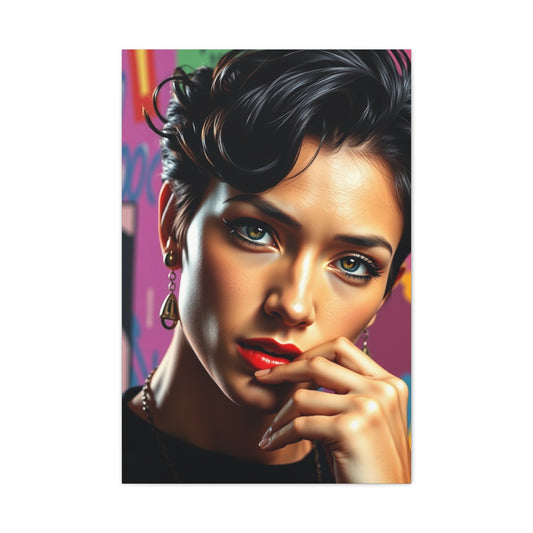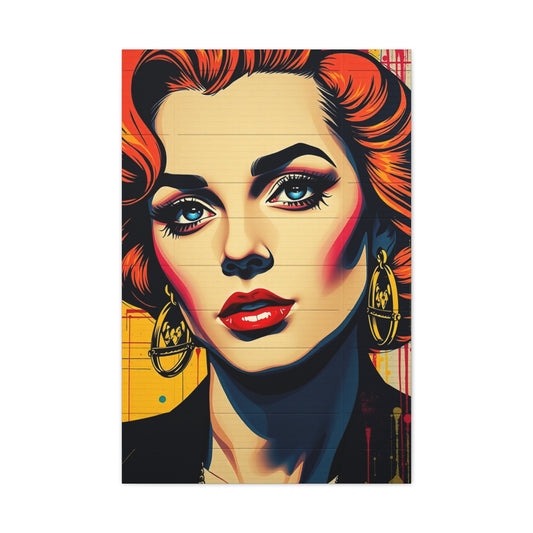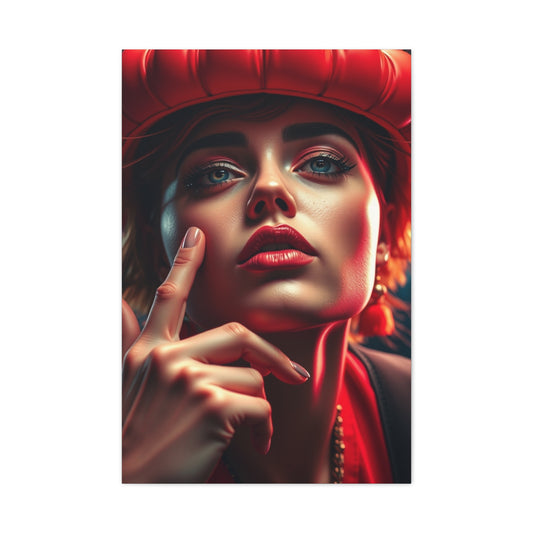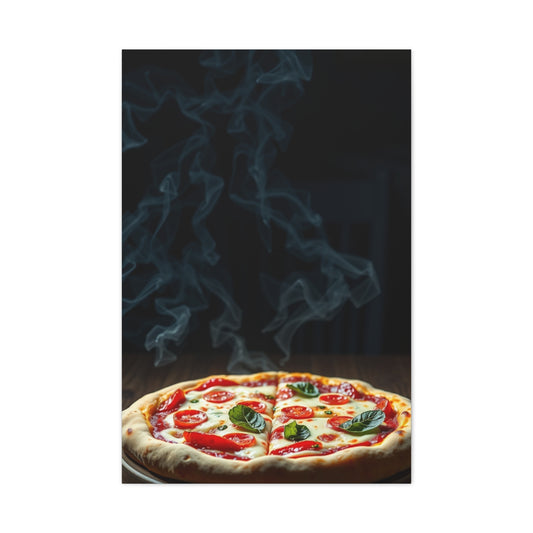Creating a house portrait with colored pencils is more than a leisurely sketch—it's a multi-layered, richly immersive artistic process that calls for a keen eye, a steady hand, and a thoughtful heart. Whether you’re channeling the cozy charm of a childhood home or conceptualizing an imaginary manor nestled in the woods, the magic of colored pencil artistry brings that vision into tangible form. This journey begins not with a flurry of color, but with learning to see—shapes, shadows, and subtleties that imbue architecture with soul.
The Allure of Colored Pencil Illustration
There’s a timeless elegance in the way colored pencils let you build depth slowly. Unlike digital or paint mediums that allow rapid application, pencils invite the artist to linger—layer by layer—sculpting a scene with restraint and deliberation. Each stroke holds intention, and each gradient is a quiet evolution of color, texture, and tone. When rendering houses, this control becomes invaluable. Whether it’s the dappled light catching the eaves of a stone cottage or the interplay of reflection and shadow in a modern townhouse’s windows, pencils capture it all with uncanny precision.
Selecting Your Tools for Success
Before your first line hits the page, the tools you choose will influence every outcome. Your pencils are your voice, and selecting the right set is as vital as choosing the right words for a poem. Wax-based varieties like Prismacolor Premier offer lush pigmentation and dreamy blends, ideal for expressive skies and lush foliage. On the other hand, oil-based pencils, such as Faber-Castell Polychromos, provide tighter lines and exceptional control, perfect for crisp architectural edges and intricate patterns in brickwork or iron scrolls. A third category—water-soluble pencils—adds versatility, blending with water for delicate washes, though they’re less traditional in dry-layered architectural rendering.
Complement these with a set of durable tools: a manual sharpener that ensures controlled precision, a kneaded eraser for subtle lifting without damage, and quality paper that can handle multiple layers without buckling or warping. The surface texture of your paper—known as the tooth—should hold pigment without being too grainy. Look for acid-free, heavyweight options such as bristol board or hot-press watercolor paper.
Understanding the Architecture Before the Art
To draw architecture well, you must appreciate its grammar—the structure, symmetry, and subtle ornamentations that lend each building its identity. A Victorian house whispers elegance with its gables and ornate trims. A Colonial structure commands stoicism with its symmetry and order. A Bauhaus-style modern home reverberates with minimalist harmony. Before your pencil moves, study these forms. Capture reference photographs, not just of entire buildings but close-ups: the scroll on a wrought iron balcony, the way sunlight grazes over terracotta roof tiles, the speckled patina of an old wooden shutter.
Sketch with curiosity. Don’t just replicate—investigate. How does the dormer break the roofline? How do shadows stretch across the clapboard siding at noon versus sunset? By dissecting the anatomy of architectural styles, you elevate your drawing from decorative to documentary.
The Anatomy of a Sketch
Now comes the initial layout—the skeletal foundation upon which all color will build. Start with basic shapes: rectangles for the walls, trapezoids or triangles for the roof, and circles for arched windows. These rudimentary elements might seem simplistic at first, but they’re the scaffolding of accurate proportions and believable perspective.
Employ a vanishing point (or two) to maintain visual consistency. If your house is facing front, a single-point perspective may suffice. For angled views, a two-point perspective will ensure walls and roof lines converge naturally. This geometric integrity is essential; without it, even the most masterful coloring will fall flat. Rulers are your allies here, helping to keep lines true and angles clean. For curved architectural embellishments—arched doors, rounded turrets, or scrolling trims—a compass or French curve can provide just the right level of control.
Bringing the Sketch to Life with Layering Techniques
When your layout feels right, it’s time to introduce color—softly, tentatively at first. Colored pencil art thrives on layering, a process where pigment is built up gradually to create vibrancy and texture. Begin with the lightest shades, reserving darker values for subsequent layers. This approach grants luminosity and prevents colors from becoming muddy or over-saturated.
For example, if you're rendering red brick, start with a pale peach or warm beige base. Gently introduce midtones like rust or sienna, and deepen crevices with plum or burnt umber. Avoid diving in with the darkest hue first; layering mimics the nuanced complexity of light as it dances across real materials.
Blending: The Alchemy of Smooth Transitions
Smooth color transitions create realism and guide the viewer’s eye across the page. There are multiple strategies to achieve blending with pencils. White pencils can soften harsh edges and mute transitions, especially in pastel or sunlit scenes. Colorless blenders help polish surfaces, marrying pigments into one unified tone. Tortillons or cotton swabs can push pigment into the tooth of the paper, smoothing graininess while preserving vibrancy.
Another technique is burnishing—applying heavy pressure with a light pencil or blender to create a glossy, enamel-like surface. This works especially well for reflective materials like glass, polished wood, or tiled rooftops. Use it sparingly, though; overuse can flatten textures that should remain tactile, like stucco or stone.
Crafting Shadows and Light with Sophistication
A convincing house drawing doesn’t just replicate structure—it interprets light. Where is your light source? Is it an overhead sun casting short, stark shadows, or a low golden glow elongating silhouettes? Establishing this early informs every element of your rendering.
Shadows shouldn’t be filled in with flat blacks. Instead, mix analogous or complementary shades to deepen areas organically. Blue-violet tones often serve as effective cool shadows on pale surfaces, while olive or crimson can intensify darker architectural materials. Highlights can be lifted with erasers or enhanced with white pencil or gel pen. Don’t forget reflected light—a subtle halo of brightness that bounces from the ground or nearby objects, giving dimension and richness.
Infusing Emotion Through Architectural Detail
What transforms a sterile building into a living memory? The answer lies in its minutiae. Individual roof shingles, unevenly spaced bricks, a creeping ivy vine wrapping a column—these are the intimate touches that breathe life into your subject.
Use short, deliberate pencil strokes to mimic textures: horizontal hatching for clapboard siding, stippling for concrete or gravel paths, and gentle scumbling to replicate stucco or aged paint. Don’t strive for photorealistic perfection. A touch of imperfection—a warped gutter, a chipped stair—lends charm and narrative to the scene. It becomes a story, not just a structure.
From Drawing to Decorative Showcase
Once your drawing is complete, consider its final destination. A thoughtfully framed house portrait transforms a simple sketch into a treasured heirloom. Use mat boards to complement your palette, and avoid heavy frames that overshadow the delicate intricacies of pencil work.
For those looking to turn their artwork into memorable keepsakes or gifts, consider reproducing it with companies like wall pics. These custom printed art tiles allow your original drawing to become a personalized gallery on any wall—a heartfelt and unique décor solution that celebrates both art and memory.
Protecting Your Masterpiece
After hours—perhaps days—of layering and refining, protect your work. A fixative spray prevents smudging and helps preserve color vibrancy over time. Choose a non-glossy, archival fixative designed specifically for colored pencils. Spray in a well-ventilated area and apply several light coats rather than one heavy application to avoid discoloration.
Store your original drawings in protective sleeves or flat portfolios if not displaying them. Avoid high humidity, direct sunlight, or areas prone to pests that may damage paper fibers.
Imaginative Drawing
Drawing a house isn’t merely an act of replication—it’s an opportunity to tell a story. While referencing real architecture provides structure, tapping into your imagination infuses your work with individuality and soul. In this second installment of our series on creating realistic and vibrant house art with colored pencils, we’ll explore the art of designing a compelling house illustration that goes beyond basic facades. You’ll learn how to merge references, invent new designs, interpret architectural styles with flair, and create drawings that feel lived-in, emotive, and deeply personal.
Whether you're designing from memory or crafting a house that exists only in your imagination, the techniques here will help you conceive compelling visual narratives—houses that breathe with history, charm, and character.
The Spark of Inspiration: Where Your House Begins
Every great drawing starts with an idea—a moment, a memory, or even a feeling. It might be the ivy-covered wall from a summer abroad, the asymmetrical bay window of a childhood friend’s home, or an imagined cliffside retreat perched on foggy moors.
The key to imaginative house drawing lies in observation and reinterpretation. Look beyond the obvious. A single curved archway might inspire a Mediterranean villa; a leaning chimney could become the cornerstone of a whimsical woodland cottage. Capture fragments of inspiration wherever you go—photographs, quick location sketches, or even storybook illustrations can act as springboards.
Keep a visual journal. It doesn’t have to be polished. Collage magazine clippings, add doodles, or paste swatches of color that caught your eye during a walk. This scrapbook of influence becomes your architectural playground, ready to blossom into an original design.
Architectural Storytelling: What Is This House Saying?
Every house you draw tells a story, shaped by its age, condition, purpose, and inhabitants. Whether it’s a centuries-old estate or a modern eco-home, its design should reflect its narrative. Consider whether the house is pristine or weathered, functional or creative, and who lives there—a lonely scholar, a busy family, or a hermit beekeeper.
Small details, like a fluttering laundry line or bicycles parked askew, subtly suggest the life within, letting the house’s energy speak before any character is introduced.
Blending Styles: Creating Hybrid Architecture
One of the most freeing aspects of imaginative drawing is the ability to step away from architectural conventions and blend elements from various styles to create something entirely new. This approach not only brings a fresh aesthetic but also helps evoke specific moods. For instance, you could merge Victorian and Cottagecore by combining ornate turrets and stained glass with wildflower gardens, stone paths, and moss-covered shingles.
A fusion of Modern and Rustic might feature sleek glass walls and minimalist geometry framed by natural timber, exposed beams, and river rock fireplaces. Alternatively, blending Colonial with Futuristic could result in traditional symmetry paired with solar roofs, kinetic window shutters, and sustainable materials.
Experimenting with such combinations encourages striking visual contrasts and fosters a more fluid, open-ended creative process, allowing you to develop your own “architectural dialect” — a set of unique details that recur in your work, giving it a signature style.
Sketching Your Dream House: From Concept to Form
Once you’ve chosen your thematic direction, it’s time to begin sketching. Start loosely and avoid locking into fine lines too early. Use light pencil strokes to outline your foundational shapes, keeping in mind that even the most whimsical houses adhere to basic structural rules. It’s essential to balance the fantastical elements with what’s plausible.
Begin by blocking the massing of the house using simple shapes—rectangles for walls, cubes for chimneys, and domes or gables for roofs. Think of this as sculpting from a block of clay before refining the details. Next, identify the horizon line and vanishing points to establish a believable perspective. Setting your eye level and determining where lines converge is crucial, with two-point perspective being the most common choice for dynamic views.
Once the basic shapes are in place, start refining the outline by adding contours such as roof pitches, bay window curves, overhangs, and porches. Use a ruler or straight edge where necessary to keep the geometry sharp. Then, define key features like doors, windows, staircases, balconies, and chimneys, ensuring the spacing and scale make sense in relation to each other.
Finally, consider your light source—deciding on a consistent direction for light will influence shadow placement and, later, your entire color palette.
Crafting Unique Features That Stand Out
A compelling house is more than just its walls and windows; it thrives on the details that add character and personality. Think of distinctive elements like round, ship-like porthole windows, asymmetrical roof slopes, or multi-tiered chimney stacks that catch the eye. Hidden doorways, veiled in flowering vines, can add an element of mystery, while stained glass windows shimmering in the imaginary morning sun bring warmth and magic.
Weather vanes, antique lanterns, or rooftop observatories contribute to the charm, each one telling its own story. However, don’t simply copy these details—let them evolve from the personality of the house itself. Consider the kind of person who would install a spiral staircase in the garden or string lanterns along the roofline. These unique features should reflect the character of the space, giving it life and making it feel lived-in, even before you add the residents.
Choosing a Palette with Purpose
The color scheme of your house drawing sets the tone and conveys emotion, with each color choice carrying its own symbolic meaning. Warm tones like ochre and deep reds evoke comfort and nostalgia, while cool tones like steel blue and moss green suggest calm and modernity. Muted shades offer vintage charm, and vivid hues bring whimsy and creativity.
Colored pencils allow for subtle blending, enabling you to create custom shades that enhance your drawing’s mood, like combining burnt umber with indigo for shadows or mixing butter yellow with white and pink for sunlit warmth.
Integrating Environment for Atmosphere
A house alone is static, but its context brings it to life. Landscaping elements like gardens, pathways, fences, and trees help anchor the house in space and time, giving it a sense of place. Think narratively when designing the surroundings—does the yard look tidy or wild? Are there cracked stepping stones or windblown leaves scattered about? Details like a well-placed vine, a weathered tree, or a crooked fence post add a sense of lived-in authenticity.
To create immersive environments, use varied green tones like olive, emerald, and sage for foliage, and mix browns with hints of violet or blue to depict realistic soil or stone. Fine lines can suggest grass blades or wood grain, while stippling and circular motions work well to add texture to hedges or gravel.
Don’t forget the sky, as it plays a vital role in setting the mood—cloud movement, lighting gradients, or the time of day can significantly impact the overall ambiance. Consider how dawn, dusk, or twilight affects shadows and the mood of your entire drawing.
Evolving the Design Over Time
Don’t be afraid to change your mind throughout the process of creating a house drawing. Great designs often go through several revisions. To explore different ideas without erasing your original work, use tracing paper overlays to test roof pitches, window styles, or landscaping changes. Allow your design to evolve by stepping away from it and returning with fresh eyes.
A great process for this evolution includes starting with a draft sketch to quickly capture the base design, then refining the perspective and proportion on a new layer. After that, add details like architectural ornamentation and foliage in a separate pass.
Test color palettes on smaller thumbnails to experiment with hues before committing to the final colors. Finally, combine your best ideas into the completed drawing. This patient method ensures that your artwork not only looks right but also feels right, capturing the essence of your vision.
Making It More Than a Drawing
Once your dream house is fully rendered, share it in a way that honors its uniqueness. Consider digitizing your work with a high-resolution scanner, and use platforms like wall pics to transform your artwork into tangible displays. Whether you're curating a memory wall in your own home or gifting a piece to a loved one, this approach turns imagination into impact—giving your drawing new life beyond the page.
You can also pair your drawing with short written narratives. A paragraph describing the fictional history of the house can enhance its charm and give it lore. Was it once a lighthouse turned writer’s retreat? A former bakery turned secluded studio? These stories build emotional resonance, turning viewers into believers.
Texturing and Coloring Houses
There’s a quiet kind of alchemy in bringing a sketched house to life with colored pencils. Lines become walls, curves become shutters, and rooftops take on the light of the sun or the wear of time. In this third part of our series, we’ll focus on the magic of texturing and coloring—how to evoke the tactile surfaces of shingles, brick, glass, wood, and stone. These tactile details are what give your house illustration its realism and resonance, transforming it from a technical rendering into a compelling work of art.
Coloring with depth is more than just filling in spaces. It’s about translating material essence, capturing light behavior, layering hues, and blending transitions so that a viewer not only sees your drawing—but feels it. Let's dive into the nuanced world of texture and tone, where detail meets drama.
Understanding the Soul of Each Material
Every material used in architecture carries its own texture, light behavior, and personality. The soft grain of old wood, the sharp glint of glass, the muted roughness of stone—each reacts to light and age differently. Before picking up your colored pencil, take a moment to consider what these materials want to say.
Brickwork
Brickwork has its own rhythm and repetition, and when drawing it, aim for a natural, hand-laid feel rather than perfect symmetry. Start by lightly mapping out the pattern of the bricks, allowing for slight irregularities that suggest charm and authenticity.
For the base layer, use a mid-tone color like burnt sienna or terracotta. Then, add texture by applying fine lines and grain with darker tones, such as dark umber, rust, or maroon. To define the mortar lines, use a slightly cool tone like French grey or soft graphite to separate the bricks. For an aging effect, incorporate moss or weathering with colors like olive green or dusty sage to give it a lived-in appearance.
To enhance realism, vary the intensity of the colors among the bricks—some may appear chipped or sun-bleached. Remember that bricks absorb light differently depending on their orientation, so always consider your light source when adding shading and highlights to create depth and dimension.
Wooden Siding and Shingles
Wood has a natural, organic quality, expanding and contracting over time, and capturing its texture requires attention to both directionality and tonal variation. Start by layering a soft ochre or tan base to create the foundation, then add the woodgrain by using darker tones like sepia, burnt umber, or mahogany.
When applying the strokes, follow the natural grain pattern with long, slightly wavy motions. To depict knots and imperfections, introduce dark, uneven lines and subtle circular shapes in different areas. For added depth, use indigo or cool grey to add shadows under overlaps between planks.
If you want to create the effect of sun-bleached or weathered wood, lightly overlay pale lavender or grey-green to mute the vibrancy and give the wood that beautiful, weathered coastal patina. This method brings the natural beauty of wood to life, showing both its strength and its delicate aging process.
Stone and Masonry
Stones are irregular, weighty, and carry a sense of permanence, with a color range that spans from earthy tones to glacial hues. To capture their texture, use circular scribbles and stippling techniques to mimic the rough surface of stone.
Begin with a color palette of warm greys, mossy greens, or muted browns, and accent the edges with darker shades to create separation and shadows. To add depth, introduce lighter tones like cream or sky blue sparingly to suggest facets that catch the light. It's important to avoid perfect shapes—even cut stones should vary slightly in size and surface sheen.
Subtle inconsistencies in color and texture are essential for achieving realism, as they reflect the natural irregularity and organic quality of stone.
Glass and Reflections
Drawing glass requires capturing both reflections and transparency. Start with a dark base layer, then add horizontal streaks in light tones like white or pale blue to simulate reflections. For windows showing interiors, use muted shades to suggest depth.
Add minimal white highlights on corners or panes for realism, but avoid overdoing it. The key is suggestion—let the viewer's eyes complete the illusion without overworking the details.
Coloring Techniques for Depth and Dimension
Applying color correctly is as crucial as choosing the right tones. Colored pencil work thrives on patience and layering. Let’s explore the essential techniques that bring flat surfaces to life.
Layering: The Bedrock of Realism
True depth in colored pencil drawing comes from layering colors gradually rather than forcing them. Begin with light pressure, using broad, light tones like cream, beige, or sky blue to establish the base. Next, layer midtones to define the form and set the mood of the drawing.
Apply darker shades to build shadows, weight, and dimension, allowing the layers to blend smoothly into each other with circular or cross-hatch strokes. It's important to avoid pressing too hard early on, as this can limit your ability to add finer details later on, allowing the layers to evolve naturally and create a richer, more dimensional effect.
Burnishing: For Polished Finishes
Burnishing is a technique where you press hard with a light-colored pencil or a colorless blender to meld layers together and create a smooth, polished finish. It works best on smoother surfaces like glass, painted doors, or polished wood. To burnish, use a white or light peach pencil, or a colorless blender, applying firm and even pressure to saturate the tooth of the paper. This results in a glossy, enamel-like finish.
Burnishing is particularly effective for areas that need to look clean, new, or shiny, such as window frames or decorative trim, helping to enhance the realism and depth of your drawing.
Blending: Creating Seamless Transitions
Soft blending is key to creating smooth transitions in your drawing, especially for round columns, gentle slopes, and shadow areas. For dry softening, use a blending stump to carefully blend the colors.
For broader blends, cotton swabs or tissue work well to achieve a softer, more seamless effect. To subtly mix adjacent hues, use a white or very light pencil to create smooth transitions between colors.
When dealing with high-contrast blending, like sunlight hitting a shaded wall, gradually bridge the light and dark areas using transitional midtones such as warm greys or muted ochres, ensuring a natural and cohesive shift between light and shadow.
Highlighting and Shadowing
Understanding how light hits different surfaces is vital. For architectural drawings, directional light adds drama and realism.
-
Highlights: Use white pencils, light peach, or pale lemon yellow sparingly on sunlit edges or reflective areas.
-
Shadows: Avoid flat black. Mix colors like indigo, plum, forest green, or deep maroon to create complex, natural shadows.
Don't forget cast shadows—bushes cast shadows on siding, overhangs darken windows, and stairs create angles of changing tone. These subtle shifts make the house feel anchored and dimensional.
Using Contrast and Color Harmony
Contrast defines edges, while harmony ties your scene together. You want just enough of each.
Contrast for Clarity
Emphasizing contrast directs attention to key areas like doorways, windows, or unique textures. One effective method is using complementary color juxtapositions, such as placing brick red against green foliage, to make elements stand out. Sharpen the edges of important areas with strong dark-light transitions, and place the brightest highlights against darker backgrounds to create visual pop.
However, it’s important not to over-saturate the entire piece with high contrast—allow the eye to rest in lower-contrast zones to maintain balance and ensure the focal points truly shine without overwhelming the viewer.
Color Harmony for Cohesion
Choosing a color scheme early is essential as it unifies your work and helps create the desired emotional impact. Analogous color schemes, like blues, teals, and purples, evoke a sense of serenity, while complementary colors, such as blue and orange or red and green, create energy and contrast. For a more minimalist or historic feel, monochromatic shades like various greys or browns can set a timeless tone.
Even more vibrant, wild palettes can maintain cohesion if they follow internal rules—for example, ensuring all trimwork shares the same pastel tone or incorporating a hint of violet in every shadow. Repetition across different elements of the piece fosters unity and harmony.
Incorporating Natural Elements for Depth
Architectural drawings that include environmental details have a stronger atmosphere. Foliage, sky, shadows, and texture-rich ground bring harmony and vitality.
Greenery and Landscaping
Plants provide an excellent opportunity to contrast organic forms with clean architectural lines, from climbing ivy to unruly hedges. Use various green shades, adding subtle hints of yellow, blue, or brown to create a more realistic look.
To simulate leaf texture, apply stippling or short strokes, and use darker greens in shadowed areas for depth. Cool greys can be used to tone down saturation and add dimension. Don't overlook the small details—flowerbeds, sidewalk cracks, puddles, and bird feeders—all of these contribute to a lived-in, textured environment that enhances the realism and richness of your drawing.
Sky and Weather Effects
The color of the sky and lighting play a significant role in setting the mood of your scene. On a sunny day, use pale blue with subtle hints of cream near the horizon, and add warm shadows to evoke a bright, cheerful atmosphere. For an overcast look, use greys, lavenders, and a more subdued color palette throughout the piece to create a somber, calm tone.
Twilight scenes call for the addition of pinks, purples, and deeper blues, along with golden highlights on windows and edges, capturing the magical quality of dusk. To enhance the realism, use diagonal or curved strokes to mimic cloud movement, and remember that the sky can subtly reflect on glass and white-painted surfaces, tying the entire scene together.
Enhancing and Sealing the Vision
Once you've completed your coloring and texturing, it's time to refine your piece with finishing touches. Begin by sharpening key lines with a fine-point pencil to enhance definition, and reinforce shadows while adjusting contrast to add depth. You can also add selective outlines to define edges and correct any blurriness.
To protect your drawing and preserve the vibrant colors, use a workable fixative to prevent smudging and wax bloom. For lasting memories, scan your work in high resolution and print it as a keepsake, perhaps through wall pics for a gallery-style display in your home.
Framing the piece with a simple mat board will elevate its presentation—select frames that complement your palette, such as a distressed wood frame for a rustic cottage vibe or a sleek black one for a modern home aesthetic.
Final Touches and Presentation
As you near the completion of your colored pencil house illustration, it's essential to focus on the final touches and presentation to ensure your artwork is both protected and displayed in the best possible light. This stage involves sealing your work, selecting appropriate framing options, and considering how to share or gift your creation.
Sealing Your Artwork
To preserve the vibrancy and detail of your colored pencil drawing, applying a fixative is crucial. Fixatives help prevent smudging, reduce wax bloom, and protect against environmental factors.
Types of Fixatives:
-
Workable Fixatives: Allow you to continue adding layers after application.
-
Final Fixatives: Provide a permanent seal to your completed artwork.
Application Tips:
-
Use a well-ventilated area or spray outdoors to avoid inhaling fumes.
-
Hold the can approximately 12–18 inches from the artwork.
-
Apply in thin, even coats, allowing each layer to dry before adding the next.
Framing Your Artwork
Proper framing not only enhances the visual appeal of your drawing but also provides important protection. When matting your artwork, use acid-free mats to prevent discoloration over time and choose a mat color that complements your artwork without overpowering it.
For glazing, opt for UV-protective glass or acrylic to shield the piece from light damage, and consider non-glare options to reduce reflections and improve visibility. When mounting, ensure you use acid-free materials to secure the drawing, and make sure it doesn't touch the glass directly to prevent sticking or condensation damage.
Some artists also explore glassless framing, sealing their work with multiple layers of fixative and varnish before mounting it on rigid panels for a contemporary look, though this requires careful execution to ensure the longevity of the artwork.
Displaying and Sharing Your Artwork
Once your artwork is framed, it's important to choose the best location for display. Avoid placing it in direct sunlight to prevent fading over time, and keep it away from areas with high humidity or temperature fluctuations, as these conditions can damage the piece. If you're interested in sharing your artwork beyond your personal space, consider creating high-quality prints or photo tiles.
Services like wall pics allow you to transform your drawings into decorative pieces that can be easily arranged and rearranged on walls, making them perfect gifts or additions to any room. This way, your artwork can be enjoyed in various settings while preserving its beauty.
Gifting Your Artwork
A colored pencil house drawing makes for a heartfelt gift, capturing the essence of memories or dreams of a home. When gifting, include a note that shares the inspiration or story behind the piece, allowing the recipient to connect with it on a deeper level. Additionally, provide care instructions to ensure that the artwork remains in excellent condition over time.
For an extra thoughtful touch, consider pairing the drawing with related items, such as a matching frame or display stand, to help the recipient showcase the artwork beautifully in their space. This thoughtful presentation elevates the gift and ensures it is appreciated for years to come.
Conclusion
At the heart of every house drawing lies more than just the architecture—it’s an expression of creativity, personal memory, and the human experience. From the first pencil line to the final stroke of color, each step is a journey into the nuances of detail, emotion, and artistic growth. The process begins with more than just drawing shapes; it’s about learning how to observe the world around you with new eyes.
Through the careful study of light, perspective, and form, you start to understand how to translate what you see into something that not only looks realistic but also feels alive. As the lines transform into a structure, your choices reflect something deeper than technical skill—they’re an expression of your imagination and the story you want to tell through the image. As the colors are layered, textures emerge, adding depth and dimension, turning what was once a simple sketch into something tangible.
The careful application of shadow and light brings the house to life, making it feel as though it could stand in front of you, inviting you in. Then, as you finalize your drawing, it becomes more than just a piece of art—it becomes something to be preserved and shared, an object that holds significance far beyond its creation. Whether displayed in your home, given as a thoughtful gift, or cherished in a portfolio, the act of framing and sealing the work elevates it, ensuring that it lasts and continues to evoke meaning. This process, from the first observation to the final touch, is an act of intention.
Through your drawing, you've created something that is not just a house but a small world of your own—a world built with lines, light, and color, and infused with your own sense of history, imagination, and emotion. The beauty of art is that it’s not only about what’s on the paper, but about the connection between the artist and their creation.
Every line, every shadow, every subtle gradient of color is an expression of your growth and your unique perspective on the world. In the end, this drawing is more than a representation of a house—it’s a reflection of your artistic journey, a testament to the power of creativity, and a reminder that art is an endless exploration, a doorway to new worlds and new possibilities.




























